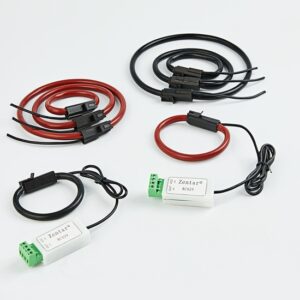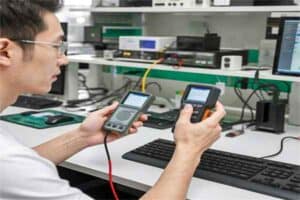[vc_row][vc_column][vc_column_text]Reactors are also called inductors. When an electrical conductor is connected to the power supply, it will create a magnetic field in a certain space it occupies. Therefore, all electrical conductors that can carry current are inductive in a general sense. However, if the power supply is long, the inductance of the electrical conductor is not large, and the resulting magnetic field is not strong. Therefore, the specific reactor is the transmission line wound into a solenoid. We call it an air-core reactor; sometimes in order to better make this Only the solenoid has a greater inductance, and the iron core is inserted into the solenoid, which we call an iron core reactor. Reactance can be divided into inductive reactance and capacitive reactance. A more reasonable classification is that inductors and capacitive reactors are collectively called reactors, because in the past there were inductors and they were called reactors. Therefore, the capacitors often referred to today are capacitors. Reactor, and reactor refers specifically to inductor.
1. The working principle of adding a reactor to the output of the inverter
To put it simply, it is an item that has the function of characteristic impedance in the power circuit, which is called a reactor. The reactor generally selected is essentially a hollow coil with no magnetic material. The hollow coil can be installed in three installation modes: vertical, horizontal and product-shaped according to the necessary layout. When a short-circuit fault occurs in the power supply system, it will cause a very large amount of short-circuit current. If it is not restricted in many aspects, it is very difficult to maintain the dynamic stability and thermal stability of electrical equipment. Therefore, in order to better consider the regulation of the interrupting volume of some isolation switches, reactors are often connected in series at the first isolation switch to expand the short-circuit impedance and limit the short-circuit current.
2. The effect of adding a reactor to the output of the inverter
The main effect of adding a reactor at the output of the inverter is to balance the distributed capacitive load of the outlet cable and increase the short-circuit impedance of the main control loop of the outlet. And it can suppress the harmonics output by the inverter, and has the effect of reducing the noise of the inverter.
The actual effect of adding a reactor when the inverter is low-frequency output should be better. Because the waveform of the inverter is weak at low frequency, and general asynchronous motors are coaxial output cooling fans, the hot situation is serious. Why is the power factor improved? Because higher harmonics do not do reasonable work, it is just a high-frequency and low-frequency oscillation. When the harmonics are improved, the power factor is naturally improved.
1. The input reactor is mainly used to suppress surge current and surge voltage, maintain the inverter, increase its service life and avoid the influence of harmonics. In addition, because the inverter uses variable frequency method to change speed, it will often Cause high-order harmonics and cause waveform erratic changes, which will endanger the normal application of machinery and equipment. Therefore, an incoming line reactor can be installed at the input end of the frequency converter to improve the power factor of the frequency converter and suppress harmonic currents, and filter out harmonics. Wave voltage and harmonic current volume improve the quality of the power grid.
2. The output reactor is mainly used to increase the reasonable transmission distance of the frequency converter, reasonably suppress the instant high voltage caused by the switching of the IGBT control module of the frequency converter, reduce the noise of the motor, reduce the eddy current loss, and maintain the output power switch element inside the frequency converter.
[/vc_column_text][/vc_column][/vc_row]




